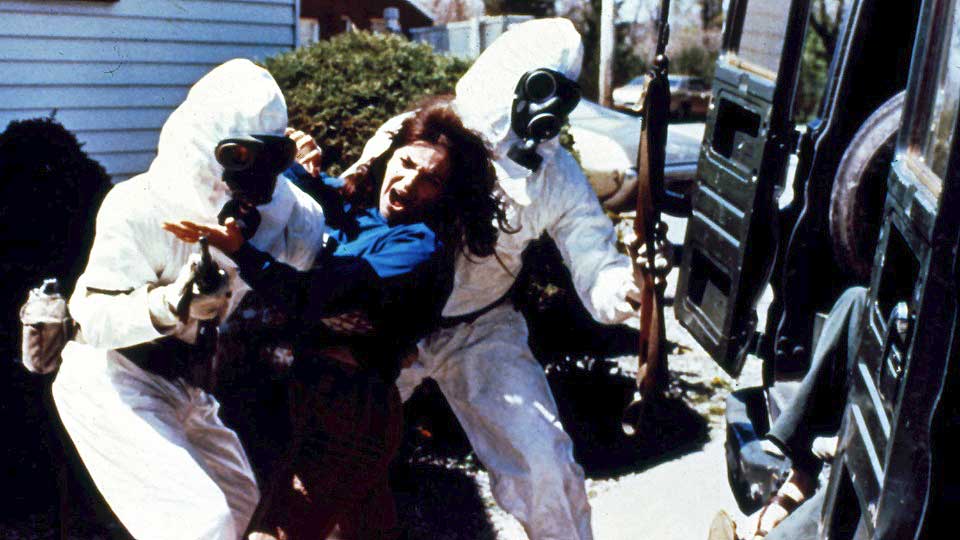
The Halloween season is reserved for relishing in the gothic and mysterious, with popular horror films competing to play on the fears of viewers in new and exciting ways. The best horror films go beyond the occasional jump scare and ghoulish creatures, though. Instead, they use bleak and fantastical scenarios to draw attention to real-world social issues.
These movies intertwine the fright with intentional messaging, allowing viewers the chance to not only set their hearts racing but also set their minds thinking. Keeping with that spirit, here are five socially conscious horror films to see (or see again) this Halloween.
The Texas Chainsaw Massacre (1974)
Don’t let the fact this film features a maniac killing people with a chainsaw and wearing their skin afterward fool you. This film, directed by Tobe Hooper, has themes baked into its simplistic plot that go deeper than a road trip gone wrong.
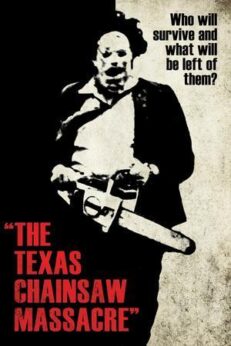 The Texas Chainsaw Massacre follows a group of friends who fall victim to a family of cannibals while on their way to visit an old homestead. Originally marketed as being based on true events, the film works in subtle commentary on the era’s political climate. To understand what that means, one need only look at two major happenings of the era when the movie premiered: the Watergate scandal and the Vietnam War.
The Texas Chainsaw Massacre follows a group of friends who fall victim to a family of cannibals while on their way to visit an old homestead. Originally marketed as being based on true events, the film works in subtle commentary on the era’s political climate. To understand what that means, one need only look at two major happenings of the era when the movie premiered: the Watergate scandal and the Vietnam War.
Director Hooper, who co-wrote the film with Kim Henkel, noted in the official audio commentary decades later, “This film kind of came out of the Watergate times. It was kind of inspired by it, in a lot of ways.”
The Watergate scandal changed the way many people looked at their political leaders, encouraging a more critical and scrutinizing perspective. It involved then-President Richard Nixon’s involvement in the cover-up of a robbery of the office of the Democratic National Committee during his re-election campaign.
What followed was explosive and crucial journalism by reporters Bob Woodward and Carl Bernstein, who exposed Nixon’s direct involvement in the cover-up of the robbery, along with illegal wiretapping. This led to Nixon’s resignation on Aug. 9, 1974, heading off his impending impeachment by Congress.
The war against Vietnam and its neighbors Laos and Cambodia was a 20-year imperialist misadventure, first by France and then U.S., that lasted from 1955 to 1973 (stretching back even further, but those details are for another time). It was a war filled with inhumane atrocities, carnage, and misinformation. It sparked a mass anti-war movement in the United States, bringing protesters into the streets.
Nixon, like a certain recent president, kept referring to the “silent majority” whom he claimed to represent. They, he said, supported the war. Yet, revelations such as the 1968 My Lai Massacre—in which a U.S. Army unit raped and killed Vietnamese civilians— showed many Americans that the government was intentionally misleading the public about what the military was really doing in Indochina.
In an interview with the magazine Rue Morgue, Hooper explained that the “lack of sentimentality and the brutality of things” while watching the local news, which often showed graphic coverage of the war, led to his belief that “man was the real monster here, just wearing a different face, so I put a literal [human skin] mask on the monster in my film.”
This lack of trust in authority, misinformation, and numbness to rampant violence is the inspiration that runs throughout The Texas Chainsaw Massacre. It is a chaotic and brutal film, with an atmosphere that reflects the tension of the decade. The group of young people traveling through the South simply want to enjoy their time but are led astray by those with nefarious intentions. The film uses the slasher subgenre of horror to point a finger at the atrocities happening in the real world.
The Crazies (1973)
This science-fiction horror film was directed by one of the masters of horror—George A. Romero. Known more for his zombie classics like Night of the Living Dead, Romero took a stab at a film that deals with the alive and infected rather than the undead.
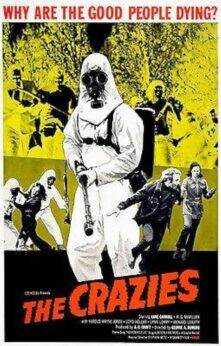 In The Crazies, the military attempts to contain a manmade combat virus that causes death and permanent insanity in those infected. It ends up overtaking a small Pennsylvania town, where the residents are trying to survive and make sense of the seemingly aggressive military occupation. Two of the main characters are Vietnam War veterans, while the third is an African-American colonel, with better intentions than his government superiors.
In The Crazies, the military attempts to contain a manmade combat virus that causes death and permanent insanity in those infected. It ends up overtaking a small Pennsylvania town, where the residents are trying to survive and make sense of the seemingly aggressive military occupation. Two of the main characters are Vietnam War veterans, while the third is an African-American colonel, with better intentions than his government superiors.
The Crazies is an action-packed ride from start to finish, but at the heart of it is a story dealing with regular working people being collateral damage to the wrong-doings of those they trust to protect them. Although the film was initially a box-office failure, director Romero believed that it had to do with people not being mentally ready for the themes the movie was diving into.
As he put it in a 1977 interview, “At the time I made it, we were still in Vietnam and it was a very heartfelt problem, a part of the national consciousness, and I don’t think anyone was ready to see that situation––even though it’s not a Vietnam film, it’s an anti-military film.”
This is probably most evident in a moment when the town’s priest sets himself on fire due to the military’s evacuation of his church. The visual itself, as Romero would later acknowledge in the official DVD commentary, is a direct reference to Vietnamese Mahayana Buddhist monk Thích Quảng Đức’s self-immolation in opposition to the Vietnam War in 1963.
Another film not for the faint of heart, but with more action than gore.
Get Out (2017)
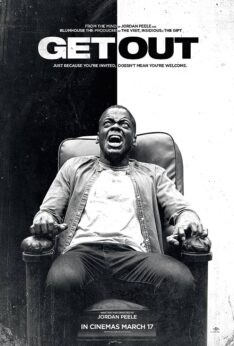 A more recent film than the previous two, Get Out made instant cultural waves when director and writer Jordan Peele brought it to theaters. Coming out on the heels of the election of one of the most outwardly racist and bigotry-enabling modern-day presidents, Donald Trump, the film touched on themes of racism, discrimination, anti-Blackness, and white privilege in new and innovative ways.
A more recent film than the previous two, Get Out made instant cultural waves when director and writer Jordan Peele brought it to theaters. Coming out on the heels of the election of one of the most outwardly racist and bigotry-enabling modern-day presidents, Donald Trump, the film touched on themes of racism, discrimination, anti-Blackness, and white privilege in new and innovative ways.
The psychological horror film focuses on a young Black man who goes home with his white girlfriend to meet her parents. Something doesn’t feel right in the majority white suburban neighborhood, however. Black people are disappearing and re-emerging as altered and more docile individuals. The plot is simple enough, but the dialogue between the characters manages to reflect on the subtle everyday racism and micro-aggressions Black people can face, along with the racial systemic issues that shape our society.
As director Peele noted, he sees Get Out as more than a fictional horror film but as a documentary. In an interview with television host Stephen Colbert, the director remarked, “The movie is truth. The thing that resonated with people is truth. For me, it’s more of a historical biopic.”
The People Under the Stairs (1991)
Written and directed by another master of horror, Wes Craven’s The People Under the Stairs deals with classism, racism, and slumlords. A young boy and his family living in an impoverished Los Angeles neighborhood are facing eviction by their heartless wealthy landlords, the Robesons. Amidst breaking into the rich couple’s home, the young boy discovers they are hiding deadly secrets.
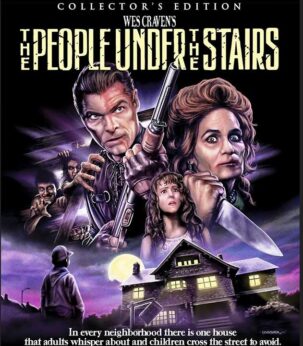 Leaning a bit more on the comedic side, the film shows the outlandish absurdity and depravity of greed and wealth-hoarding through the Robeson characters. “Mommy” and “Daddy” Robeson are reflections of the hypocrisy of ultra-right conservatism. The characters lean on Biblical teachings and so-called proper etiquette, yet their true actions are ones of selfishness, bigotry, and viciousness.
Leaning a bit more on the comedic side, the film shows the outlandish absurdity and depravity of greed and wealth-hoarding through the Robeson characters. “Mommy” and “Daddy” Robeson are reflections of the hypocrisy of ultra-right conservatism. The characters lean on Biblical teachings and so-called proper etiquette, yet their true actions are ones of selfishness, bigotry, and viciousness.
Even when confronted by police, they initially evade arrest, as officers are resistant to believing the white wealthy couple could be capable of criminal activity—showing the inequality in our justice system.
The idea of housing being a human right but left in the hands of private companies and individuals who exploit those simply wanting a roof over their heads is an issue still very much with us today.
The People Under the Stairs manages to offer some hope in the situation. The film still packs a powerful punch, as it exposes how neighborhoods of working-class people of color often fall victim to economic hardship due to failings in a system that favors the rich over the poor.
In the 2015 Blu-ray commentary track of the film released by Scream Factory, director Wes Craven noted that the house the Robeson couple lived in, along with all the horror within it, represented “the whole society of the United States.”
Godzilla (1954)
While one too many of the sequels in this movie franchise have seemingly watered down its messaging, 1954’s Godzilla had a strong political message. The monstrous creature Godzilla is not your ordinary supernatural foe; it symbolizes the dangers of nuclear warfare.
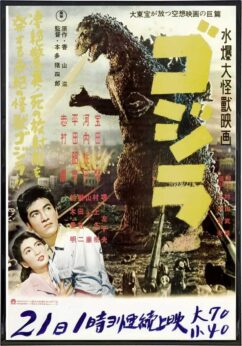 It came out a little less than ten years after the 1945 atomic bombings of Hiroshima and Nagasaki by the United States. Still fresh on the minds of many living in Japan was the devastation of that time. Godzilla put on display the dangers of nuclear testing and the human and environmental damage it has and could cause.
It came out a little less than ten years after the 1945 atomic bombings of Hiroshima and Nagasaki by the United States. Still fresh on the minds of many living in Japan was the devastation of that time. Godzilla put on display the dangers of nuclear testing and the human and environmental damage it has and could cause.
To be clear, in the film, Godzilla isn’t a monster created by the bombs; he is a natural historic creature that is awoken by hydrogen bomb testing being carried out in the Pacific (presumably by the U.S. government). Basically, Godzilla represents a powerful force of nature telling humans to stop destroying the planet and each other. The film served as a warning to the world to not repeat history with more manmade disasters.
Unfortunately, when the film made its way from Japan to the United States many aspects of it were sanitized for American sensibilities. Renamed Godzilla, King of the Monsters!, the 1956 version of the film cut out a lot of the politics and the more overt connection between Godzilla and nuclear testing. It wasn’t until 2004 that the original (and better) 1954 version was made available to movie-goers in North America.
Godzilla is a renowned horror classic that uses the creature feature subgenre to take on history and how we handle our future with the technology we create. This is a theme that is still relevant in a time when technology is rapidly advancing, affecting our lives and the world around us.
Happy horror watching!





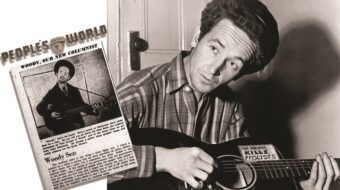
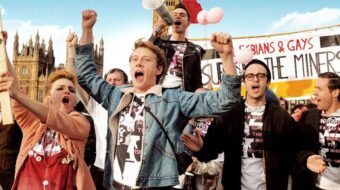





Comments